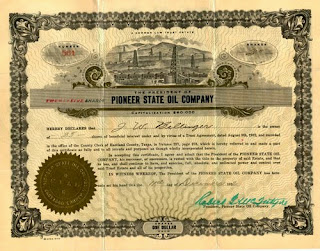Does your genealogy research turn up various information about your ancestors' friends or people who you can't place in your family tree? Do you have photographs that are marked with people's names, but you don't know who they are?
Since I'm a firm believer that information must be shared, I've created a family tree on Ancestry.com that I simply call "Missing Persons." This is where I've been filing photographs and articles I've come across on family friends, or photos that are identified with a name, but I don't know who the person is. Heck, I've already collected the information and maybe there's a chance someone else is actually looking for it.
The people in my Missing Persons tree aren't usually connected to anyone else in the tree, but they might be eventually. So the Missing Persons tree just becomes my electronic filing box for odd bits of information that I come across in my research. Of course, the tree is public so that if anyone is searching for one of these people, they can access the information I've added.
I also use that tree to do simple searches on an individual or family that I might be researching for a friend. That allows me to add any documents that I locate on Ancestry and be able to return to and access the information and documents at a later time.
Besides genealogy, one of my other passions is researching the role of Nebraska and Nebraskans in film and television. My web site is NebraskaOnFilm.com. To help me with some historical information on Nebraska's film stars, I also have a "Nebraska on Film" tree on Ancestry.com. Here, I've found census records for film greats like Fred Astaire, Marlon Brando and Henry Fonda. Naturally, I got a kick out of reading an old society page tidbit from the early 1900s in which Mr. and Mrs. Marlon Brando, Sr. (the actor's parents) attended a party given by one of the members in my family tree. I just can't let these little nuggets show up and not file them in a public Ancestry tree. At least I know where to find them, rather than looking through a stack of papers and printouts!
Think outside the box - consider creating a separate tree on Ancestry for all of those MISC-ing persons! Ancestry doesn't always have to be about your family!
Since I'm a firm believer that information must be shared, I've created a family tree on Ancestry.com that I simply call "Missing Persons." This is where I've been filing photographs and articles I've come across on family friends, or photos that are identified with a name, but I don't know who the person is. Heck, I've already collected the information and maybe there's a chance someone else is actually looking for it.
The people in my Missing Persons tree aren't usually connected to anyone else in the tree, but they might be eventually. So the Missing Persons tree just becomes my electronic filing box for odd bits of information that I come across in my research. Of course, the tree is public so that if anyone is searching for one of these people, they can access the information I've added.
I also use that tree to do simple searches on an individual or family that I might be researching for a friend. That allows me to add any documents that I locate on Ancestry and be able to return to and access the information and documents at a later time.
Besides genealogy, one of my other passions is researching the role of Nebraska and Nebraskans in film and television. My web site is NebraskaOnFilm.com. To help me with some historical information on Nebraska's film stars, I also have a "Nebraska on Film" tree on Ancestry.com. Here, I've found census records for film greats like Fred Astaire, Marlon Brando and Henry Fonda. Naturally, I got a kick out of reading an old society page tidbit from the early 1900s in which Mr. and Mrs. Marlon Brando, Sr. (the actor's parents) attended a party given by one of the members in my family tree. I just can't let these little nuggets show up and not file them in a public Ancestry tree. At least I know where to find them, rather than looking through a stack of papers and printouts!
Think outside the box - consider creating a separate tree on Ancestry for all of those MISC-ing persons! Ancestry doesn't always have to be about your family!


























